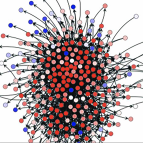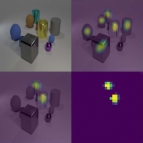Reconfigurable Edge Computing for Optimum Resource Distribution
Researchers in the Embedded and Open Systems Group are working to develop the Reconfigurable Edge Computing for Optimum Resource Distribution (RECORD), a low-power, self-reconfigurable processor with built-in security and trust for identification and classification of subjects of interest, such as objects and voices. We have optimized the processor to self-adapt its resources to the computations needed to process data collected near a sensor (i.e., edge computing). RECORD was designed to provide security and data privacy for interconnected sensor systems, like commercial "smart" devices or U.S. border security systems, while also minimizing compute power.

Today's interconnected microsystems, part of the ever-expanding internet of things (IoT), often process data for identification and classification applications by using deep neural networks, which require large compute resources. Some commercial applications perform low-level computations in the end-user's platform and outsource more computationally intensive operations to the cloud. For many government and industry applications, low-level processing is inadequate to carry out necessary computations and outsourcing to the cloud presents security risks. RECORD's ability to adapt resources enables it to perform necessary complex computations while its custom secure processor provides data protection. The processor is kept at the lowest power setting and autonomously enables higher power and performance as needed. For example, if a system is configured to identify and obey commands from a precharacterized human voice, the least amount of system resources is used until a voice is detected above background noise. Then, additional resources are activated to characterize the voice and then determine if the voice is a match.
We are building a RECORD demonstration system to showcase the power savings attained through constant self-monitoring that enables consumption of only the resources needed for edge data processing.
Related Publication: "A Hardware Root-of-Trust Design for Low-Power SoC Edge Devices"


